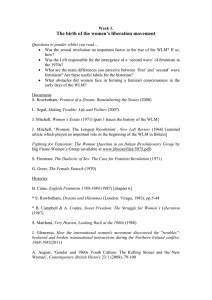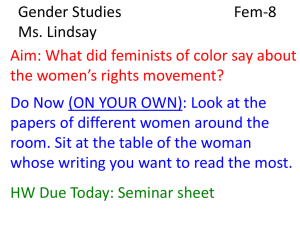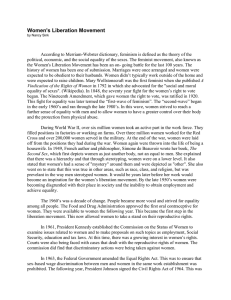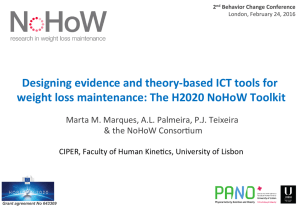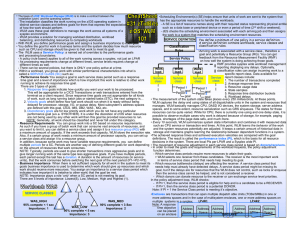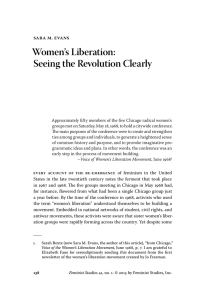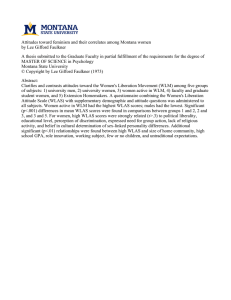Cultures of activism
advertisement
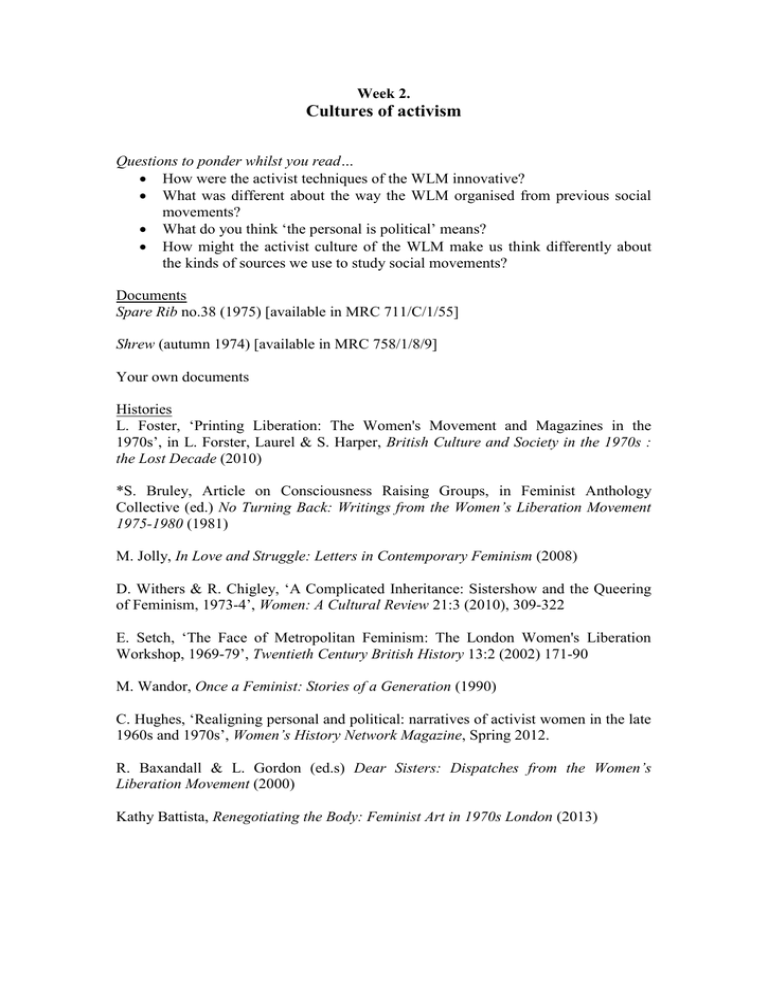
Week 2. Cultures of activism Questions to ponder whilst you read… How were the activist techniques of the WLM innovative? What was different about the way the WLM organised from previous social movements? What do you think ‘the personal is political’ means? How might the activist culture of the WLM make us think differently about the kinds of sources we use to study social movements? Documents Spare Rib no.38 (1975) [available in MRC 711/C/1/55] Shrew (autumn 1974) [available in MRC 758/1/8/9] Your own documents Histories L. Foster, ‘Printing Liberation: The Women's Movement and Magazines in the 1970s’, in L. Forster, Laurel & S. Harper, British Culture and Society in the 1970s : the Lost Decade (2010) *S. Bruley, Article on Consciousness Raising Groups, in Feminist Anthology Collective (ed.) No Turning Back: Writings from the Women’s Liberation Movement 1975-1980 (1981) M. Jolly, In Love and Struggle: Letters in Contemporary Feminism (2008) D. Withers & R. Chigley, ‘A Complicated Inheritance: Sistershow and the Queering of Feminism, 1973-4’, Women: A Cultural Review 21:3 (2010), 309-322 E. Setch, ‘The Face of Metropolitan Feminism: The London Women's Liberation Workshop, 1969-79’, Twentieth Century British History 13:2 (2002) 171-90 M. Wandor, Once a Feminist: Stories of a Generation (1990) C. Hughes, ‘Realigning personal and political: narratives of activist women in the late 1960s and 1970s’, Women’s History Network Magazine, Spring 2012. R. Baxandall & L. Gordon (ed.s) Dear Sisters: Dispatches from the Women’s Liberation Movement (2000) Kathy Battista, Renegotiating the Body: Feminist Art in 1970s London (2013)
